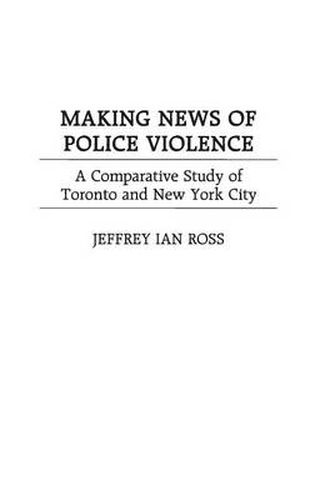Readings Newsletter
Become a Readings Member to make your shopping experience even easier.
Sign in or sign up for free!
You’re not far away from qualifying for FREE standard shipping within Australia
You’ve qualified for FREE standard shipping within Australia
The cart is loading…






Although many people consider excessive police violence disconcerting, if, when, and how they voice their opinion or respond by taking some sort of action has generally remained empirically unknown. In the hope of understanding this process, Ross has developed a four-stage model, based on a review of the literature and on interviews with the relevant actors. He then uses this tool to analyze police violence that occurred in Toronto, Canada and New York City, over a fifteen-year period. To better focus the study, he uses in-depth case studies of three well-publicizes cases of police violence from each city, matched on imporant criteria. This study addresses a difficult, timely, and important topic for victims, for police personnel, and for society. Ross concludes that, in general, most individuals do not respond to police use of excessive force; further, if and when they do usually depends on the context of the violence. Using both quantitative and qualitative methods, Ross’s model integrates a variety of approaches to improve our understanding of how communities come to define and control the use of force by police, including literature on the role of media efforts and their impact upon police violence. The work concludes with an analysis of the reasons why people react so infrequently to incidents of excessive force.
$9.00 standard shipping within Australia
FREE standard shipping within Australia for orders over $100.00
Express & International shipping calculated at checkout
Although many people consider excessive police violence disconcerting, if, when, and how they voice their opinion or respond by taking some sort of action has generally remained empirically unknown. In the hope of understanding this process, Ross has developed a four-stage model, based on a review of the literature and on interviews with the relevant actors. He then uses this tool to analyze police violence that occurred in Toronto, Canada and New York City, over a fifteen-year period. To better focus the study, he uses in-depth case studies of three well-publicizes cases of police violence from each city, matched on imporant criteria. This study addresses a difficult, timely, and important topic for victims, for police personnel, and for society. Ross concludes that, in general, most individuals do not respond to police use of excessive force; further, if and when they do usually depends on the context of the violence. Using both quantitative and qualitative methods, Ross’s model integrates a variety of approaches to improve our understanding of how communities come to define and control the use of force by police, including literature on the role of media efforts and their impact upon police violence. The work concludes with an analysis of the reasons why people react so infrequently to incidents of excessive force.